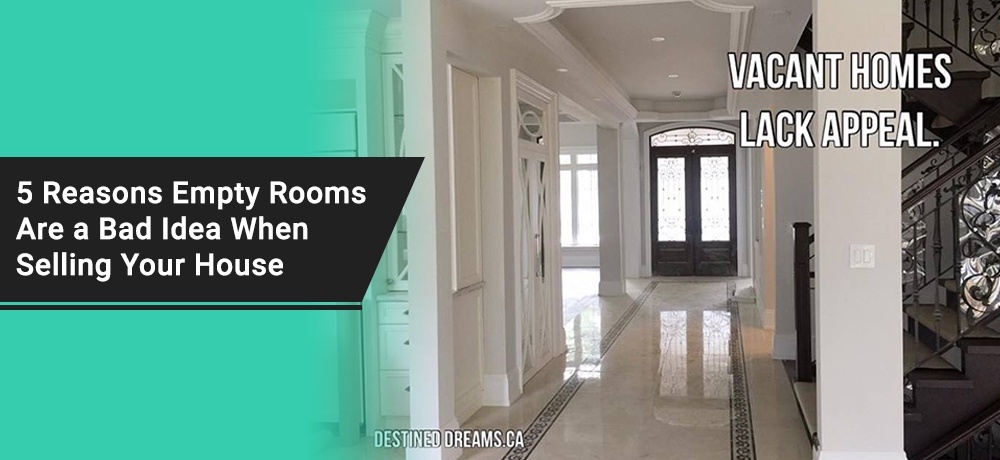5 Reasons Empty Rooms Are a Bad Idea When Selling Your House

Newly renovated, but this is a depressing first view when you walk into the house. And it looks so small!
Whether you’re a builder about to list a spec home, an investor ready to sell your vacant property, or a home seller who is living in a house with empty rooms and you’re wondering whether to furnish them before listing your house, this article is for you.
If you are hoping to sell the home quickly and for as much money as possible, it’s a bad idea to try and sell a house with empty rooms.
Here are 5 reasons why you should always use furniture and/or accessories in a room rather than showing it empty:
1. People don’t buy houses, they buy homes.
This is the same main floor as shown in the image above. Now, this feels like a home that buyers can make an emotional attachment to! It's also important to give people a sense of how furniture fits in the space. Most potential home buyers can't visualize the possibilities without help. Notice how much bigger the area looks with furniture!
When you sell a house, you aren’t selling a commodity. You are selling a HOME, a place where a family will LIVE, raise their kids, have a refuge from the outside world. Even if you’re selling a tiny condo, you’re selling to someone who will bring their hopes and dreams of how their lives can be to living there.
Walking through empty rooms, or an empty house, is usually pretty depressing. It looks lonely, it doesn’t shout “this is your home, you will love living here.” So why would a buyer feel especially motivated to make an offer?
2. It’s hard to understand how large a room is when there’s nothing in it as a reference point.
Are you inspired by this freshly painted, but seemingly tiny master bedroom? Pretend you’re the buyer, which master bedroom are you more likely to remember favorably after seeing 8 houses in a day? This is the same room, decorated to sell with furniture and accessories provided by Six Elements.
Buyers can’t tell the difference between a 12 x 10 foot room and a 14 x 12 room if it’s empty. It looks about the same even though one is 40% bigger.
And when you’re dealing with a space that is 15 x 20 feet, a potential buyer has no idea what to do with it or how to arrange it. They might think it’s just big enough for a couch, 2 chairs and a coffee table, yet there’s room for so much more.
3. People can’t visualize how furniture will fit in an empty space and if they’re unsure, they don’t buy.
As shown in the living room/dining room example at the top of this article, it would have been hard to imagine how much furniture would fit in there or how it might be arranged. It’s a relatively small space and it was important to show buyers how it could be used.
4. When a room is empty prospective buyers focus on negative details instead of falling in love with the overall space.
Instead of looking at the flow of one room to another, they get bogged down in questions like:
- Is the drywall smooth?
- Will those bumps in the carpet come out?
- How come the closet doesn’t have a hanging bar yet?
- Why doesn’t that molding fit perfectly?
- How come the light switch is in the middle of the wall?
5. When a house or even a few rooms are empty prospective buyers can get distracted from looking at the house.
Instead of focusing on whether this is the home for them, they may be busy wondering: Is this a divorce? Have they left town? Are they selling because they have money problems? This train of thought will take them where you, as a vendor, don’t want them to go!
They’ll start thinking, “maybe I can put in a low ball offer since the seller might be desperate.” Clearly this is not the situation to get you the best price for the property. Why leave money on the table when a relatively minimal investment in home staging can make all the difference?